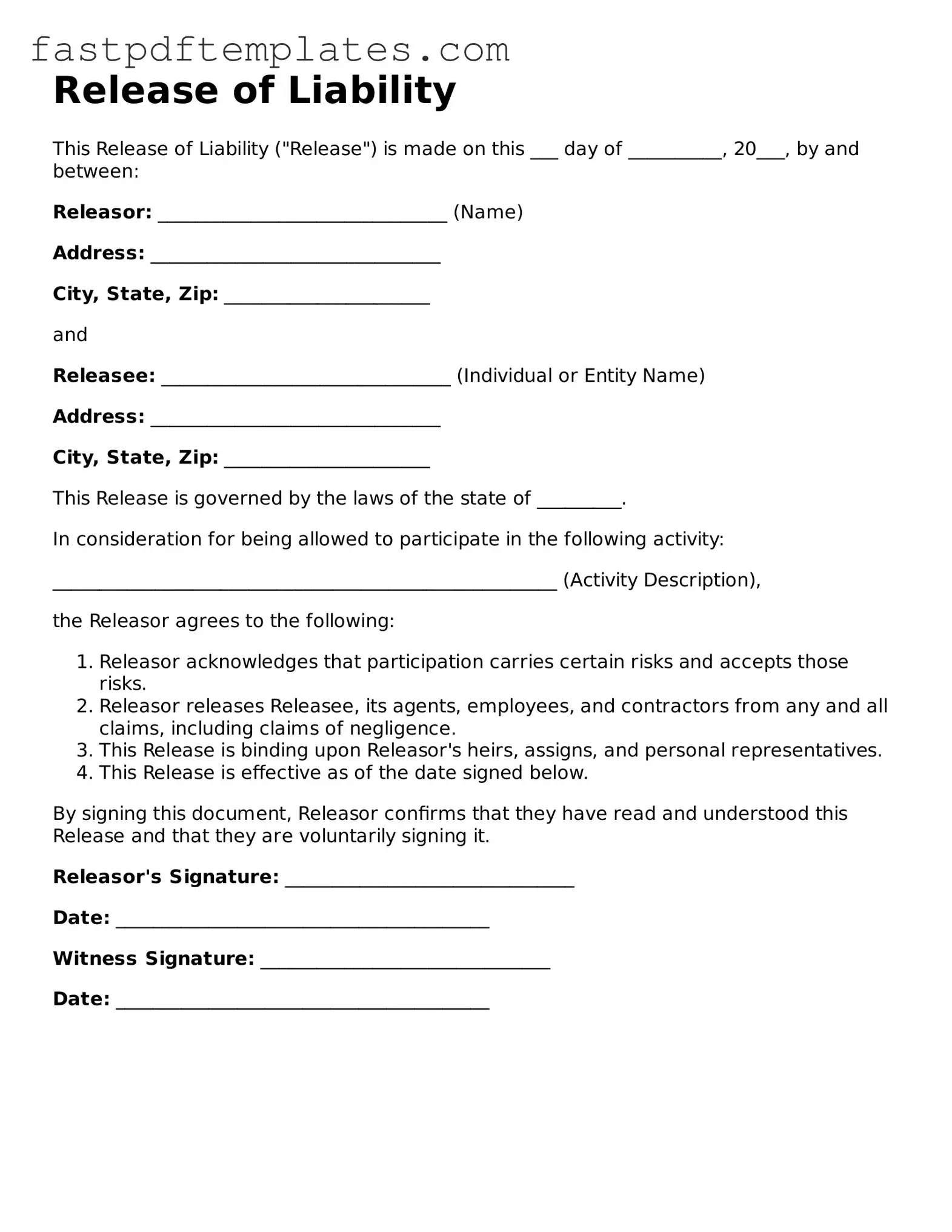Release of Liability
This Release of Liability ("Release") is made on this ___ day of __________, 20___, by and between:
Releasor: _______________________________ (Name)
Address: _______________________________
City, State, Zip: ______________________
and
Releasee: _______________________________ (Individual or Entity Name)
Address: _______________________________
City, State, Zip: ______________________
This Release is governed by the laws of the state of _________.
In consideration for being allowed to participate in the following activity:
______________________________________________________ (Activity Description),
the Releasor agrees to the following:
- Releasor acknowledges that participation carries certain risks and accepts those risks.
- Releasor releases Releasee, its agents, employees, and contractors from any and all claims, including claims of negligence.
- This Release is binding upon Releasor's heirs, assigns, and personal representatives.
- This Release is effective as of the date signed below.
By signing this document, Releasor confirms that they have read and understood this Release and that they are voluntarily signing it.
Releasor's Signature: _______________________________
Date: ________________________________________
Witness Signature: _______________________________
Date: ________________________________________
